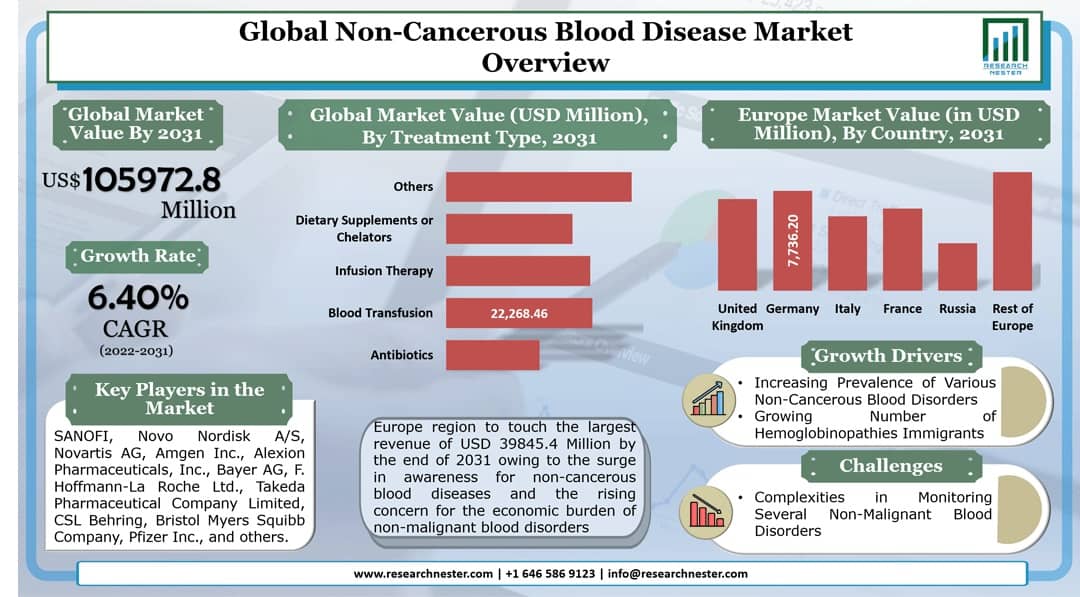
Non-Cancerous Blood Disease Market size was over USD 63.41 billion in 2023 and is projected to exceed USD 143.78 billion by 2036, growing at over 6.5% CAGR during the forecast period i.e., between 2024-2036. In the year 2024, the industry size of non-cancerous blood disease is assessed at USD 66.71 billion. The growth of the market can be attributed to the growing prevalence of several non-cancerous blood disorders, such as hemoglobinopathies, platelet & coagulation related disorders, anemia, sickle cell disease, hemophilia, and thalassemia among others. For instance, according to the statistics by the World Health Organization (WHO), in the year 2019, the global prevalence of anemia recorded to be 29.9% in women of reproductive age, 29.6% in non-pregnant women of reproductive age, and 36.5% in pregnant women. Additionally, in children between the ages 6 and 59 months, the prevalence of the disease in the same year was 39.8%.
The non-cancerous blood disease market growth can also be attributed to the growing burden of hemoglobinopathies, backed by the increasing migration of population to higher-income countries from low- as well as middle-income nations. The human migration is expected to continue at an increasing rate amid globalization. Consequently, the number of hemoglobinopathies immigrants is also expected to grow, supported by population growth and transition to public health. Besides this, the increasing need for early diagnosis of these diseases, followed by the rapid advancements in the development of orphan drugs, along with the emerging research activities in the development of advanced drugs and therapies are also expected to boost the non-cancerous blood disease market growth in the coming years.

Author Credits: Radhika Pawar
Copyright © 2024 Research Nester. All Rights Reserved

FREE Sample Copy includes market overview, growth trends, statistical charts & tables, forecast estimates, and much more.
Have questions before ordering this report?